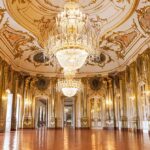The Baroque
The seventeenth century was characterized by a strong innovation in the arts, which underwent a real development. The stylistic current that characterized this century was in fact the Baroque, known for its theatricality and the grandiloquence of forms.
Even more than the previous styles, the Baroque is found in all artistic forms: from paintings to sculptures, from architecture to furnishings. On the contrary, it is often difficult to divide the various artistic forms, which are simultaneously used for the creation of works that are as dynamic and effective as possible.
Baroque art is in fact characterized by strong characters of dynamism and a new conception of nature. The space breaks up, the forms open up, a lacerated conception that loves contrasts breaks every mathematical equilibrium with a new sense of infinity, suggested by an unfinished motion. The artistic forms interact with each other, creating spectacular works that find a perfect match in the new civilization of the image. The triumphant Church and the absolute European monarchies rely on art to celebrate their greatness. They want to give their era a grandiose, sumptuous, eloquent image, which wants to mask a very different reality, dramatic and full of lacerations.
The main objective is to strike and amaze, aiming at the emotion and surprise of the viewer.
The father of the Baroque was Gian Lorenzo Bernini, a famous architect and sculptor active above all in Rome. His art is characterized by a new rediscovery of forms, aimed at a theatrical representation that eludes spatial limits. An emblematic work is the Cornaro Chapel in the Roman church of Santa Maria della Vittoria. The famous sculpture depicting the Ecstasy of Saint Teresa is known for its absolute dynamism, also thanks to the drapery treated in a highly plastic way.
Great attention is also paid to the treatment of light. Golden rays reflect and lead the light coming from the window (hidden by the pediment of the temple) to the recumbent figure of the saint. Considerable is the development of the decorative apparatus of the entire chapel, characterized by a fusion of architecture and sculpture that creates an illusionistic and highly theatrical effect. On the sides of the chapel are in fact emulated balconies, from which the exponents of the client family look out, as if they were really witnessing the divine episode, almost as if it were a show.
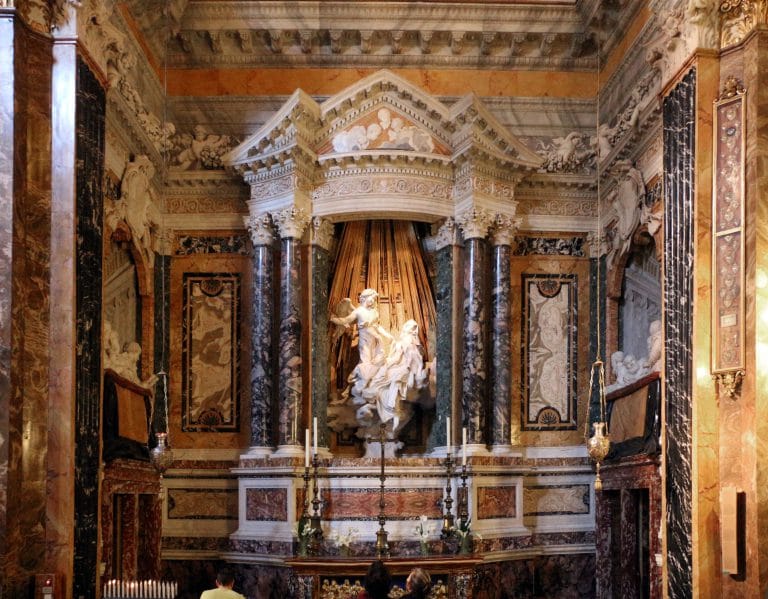
This illusionistic representation is also found in the decorative pictorial campaigns. It is the century of the decorations of the ceilings with large openings, as if the representation of celebratory and glorious scenes canceled the architectural limits.
Emblematic in this regard are the Triumph of the name of Jesus in the homonymous church, created by Baciccio and the Triumph of Divine Providence created by Pietro da Cortona in the palace of the Barberini family.
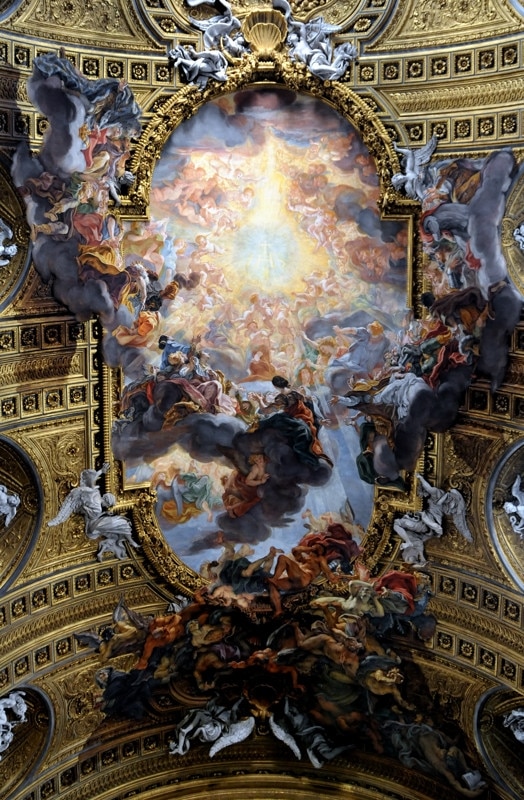
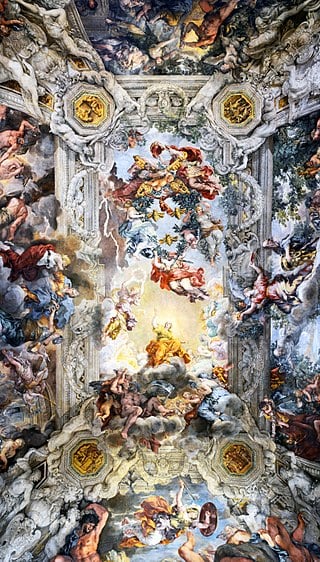
Even the furnishings, as already mentioned, manifest this taste, transforming themselves from simple everyday objects to real sculptural works.
An admirable example is a wall table made by Antonio Chicari based on a design by Bernini, in carved, sculpted and lacquered wood.
The base rests on four plant supports like cornucopias facing upwards and intertwined, embellished with leaves, fruit and corollas; the whole sculpture is made with an obsessive carving to say the least, it is pervaded by a riot of naturalistic elements that follow the artistic principles of Bernini, aimed at imitating nature and reproducing it in the form of an exuberant and very vital decoration.
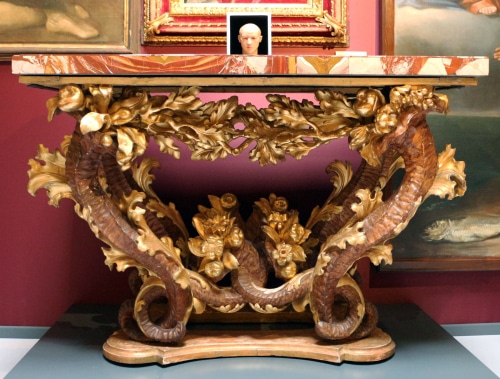
In addition to plant decorations, the bases of the tables are transformed into real sculptures with mythological characters accompanied by plant motifs, almost like a sort of natural Baroque evolution of Mannerist grotesques (see the article on Mannerism). Wood or iron are gilded, if precious materials are not used directly, to increase their value and richness. In fact, elaborate table cabinets of an architectural type, made of ebony, ivory, tortoiseshell and gilt bronze plates, spread. In Rome the most famous architects influence the design of the furniture which becomes grandiose, opulent and dramatic with contrasting rhythms and a strong sculptural sense.



